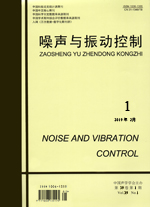A three-layer continuously supported ballasted track model was built, and motion equations of the rail, sleeper and ballast were derived. By using the frequency domain analysis, the steady-state responses due to harmonic excitation were obtained. Then the wheel/rail interaction model in the frequency domain was introduced, and the wheel/rail force was solved based on the dynamic flexibility method. On the MATLAB platform, a program was compiled and the dynamic performance of ballasted track induced by track irregularities was solved in frequency domain. In the case study, the indexes of wheel/rail force, force transmissibility, track components vibrations were considered to assess vibration reduction effects of measures such as elastic fastener, soft baseplate under sleeper, composite sleeper, ballast mat and their combinations. Results show that vibration reduction measures can change the ballasted track’s natural frequency, and then cause the complexity of changing pattern of every index. Compared to the measure of elastic fastener, the soft baseplate under sleeper and ballast mat show a better comprehensive effect, while the composite sleeper has limited vibration reduction effect.

